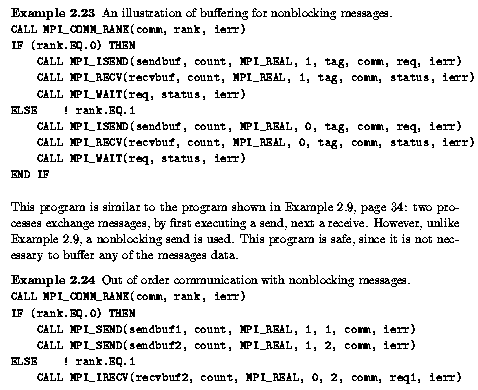
buffering, nonblockingnonblocking, buffering resource limitations nonblocking, safety The use of nonblocking communication alleviates the need for buffering, since a sending process may progress after it has posted a send. Therefore, the constraints of safe programming can be relaxed. However, some amount of storage is consumed by a pending communication. At a minimum, the communication subsystem needs to copy the parameters of a posted send or receive before the call returns. If this storage is exhausted, then a call that posts a new communication will fail, since post-send or post-receive calls are not allowed to block. A high quality implementation will consume only a fixed amount of storage per posted, nonblocking communication, thus supporting a large number of pending communications. The failure of a parallel program that exceeds the bounds on the number of pending nonblocking communications, like the failure of a sequential program that exceeds the bound on stack size, should be seen as a pathological case, due either to a pathological program or a pathological MPI implementation.
The approach illustrated in the last two examples can be used, in general, to
transform unsafe programs into safe ones. Assume that the program consists of
safety
successive communication phases, where processes exchange data, followed by
computation phases. The communication phase should be rewritten as two
sub-phases, the first where each process posts all its communication, and the
second where the process waits for the completion of all its communications.
The order in which the communications are posted is not important, as long as
the total number of messages sent or received at any node is moderate.
This is further discussed in Section ![]() .
.